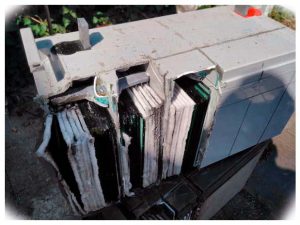If you’re having trouble getting your car to start, it could be due to a battery with voltage but no amps. The battery in your car is responsible for providing the power necessary to start the engine and keep it running once started. It does this by producing both voltage and amps. Voltage is what determines how much power is available, and amps measure the amount of current available to power accessories, lights, and other electrical components in the vehicle. A battery with voltage but no amps indicates an issue with the battery itself or its connection to your vehicle’s electrical system.
Causes of Car Battery Voltage But No Amps
There are several possible causes for a car battery showing voltage but not producing any amps:

Battery Sulfation: When lead sulfate crystals form on the plates inside a lead-acid car battery due to improper charging, frequent discharge cycles, or age. This buildup causes the battery to be unable to accept or store a charge.
High Resistance in the Electrical System: Electrical resistance can occur due to faulty wiring and connections in your vehicle’s electrical system. Too much resistance can prevent amps from flowing through the system and into the car battery, resulting in voltage but no amps.
Signs of a Car Battery with Voltage But No Amps
When you’re dealing with a car battery that has voltage but no amps, there are several signs you can look for to determine whether this is indeed your issue:
Dim Lights and Electrical Accessories: If your car’s lights and other electrical accessories seem dimmer than usual or don’t work at all, this could indicate you have a battery with voltage but no amps.
Slow or No Crank: When trying to start your vehicle, if it takes longer than usual to crank over or doesn’t crank over at all, this could indicate low-amp output from the battery.
Clicking Sounds: If you hear clicking sounds when attempting to start your vehicle, this could signify low battery voltage and amps.
How to Test a Car Battery with Voltage But No Amps
In order to determine if a car battery has voltage but no amps, you’ll need to conduct some tests:

Load Test: A load test will measure the amperage output of the battery when under load, such as when trying to crank over the engine. To do this test, you’ll need an amp tester that connects directly to your car’s terminals and measures current draw while cranking over the engine. If it reads below 70-90 amps while cranking, it indicates insufficient amps being produced by your car’s battery. See here Best Group 65 Battery.
Solutions for a Car Battery with Voltage But No Amps
There are several solutions available for dealing with car batteries that have voltage but no amps:
Recharge the Battery: If sulfation is present in your car battery, you can use a battery charger to bring it back to life. Connect the charger and let it run until the battery is fully charged.
Desulfate the Battery: If sulfation is extensive, then you may need to use a desulfator to break down the lead sulfate crystals and restore your battery’s ability to accept charge.
Replace the Battery: In some cases, a car battery with voltage but no amps may need to be replaced entirely if it’s beyond repair or if sulfation has caused too much damage for recharging or desulfating to work.
Preventing a Car Battery with Voltage But No Amps
The best way to prevent this issue from occurring in the first place is by following some simple tips:
Regular Battery Maintenance: Make sure you regularly inspect your car’s battery and clean off any corrosion on its terminals with baking soda and water solution as needed.
Avoid Draining the Battery: When not in use, make sure you disconnect your car’s battery, as draining it too far can cause permanent damage that can lead to insufficient amperage output when trying to start your vehicle.
Use a Battery Charger: Invest in a good quality battery charger and use it regularly to maintain the charge of your car’s battery. This will help ensure it can produce enough amps when needed to start your vehicle and keep it running once started.
Conclusion
A car battery with voltage but no amps is an issue that can prevent your vehicle from starting or cause dim lights, slow cranking, and clicking sounds when trying to start the engine. The causes for this issue range from internal damage in the battery itself to high resistance in the electrical system. Fortunately, there are several solutions available for restoring amperage output from a car battery with voltage but no amps, such as recharging or desulfating the battery or replacing it entirely if needed. Preventative measures such as regular maintenance, avoiding draining the battery too far, and using a quality charger can also help keep this issue from happening in the first place.


Add Comment